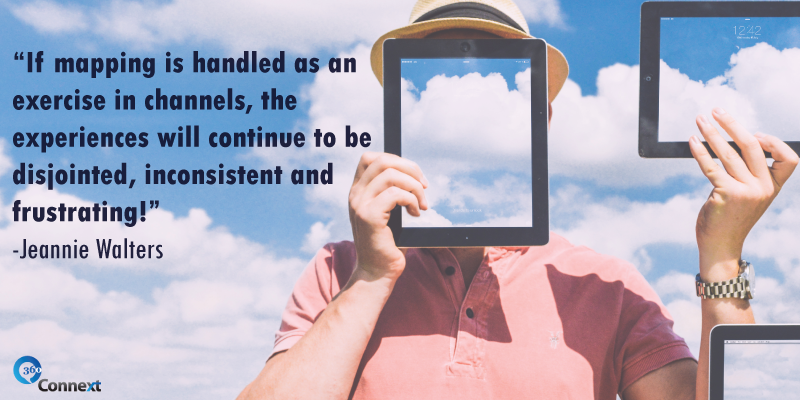
I hosted a webinar last week about digital experience. We’ve developed a process here called Digital Micromapping. This is the next step after customer journey maps in some cases, the first case in others.
In the webinar, we covered some of the typical issues we uncover during these micromapping exercises and we shared how to approach micromapping. I really hoped everyone walked away with one big idea.
Free Webinar June 25th: Walking in Your Customers’ Shoes
The customer craves a truly seamless omnichannel experience.
Jumping back and forth between an Android mobile phone and a Mac laptop and the PC in the office should offer the same experience. But if mapping is handled as an exercise in channels, the experiences will continue to be disjointed, inconsistent and frustrating!

I’ve seen robust and amazing mobile experiences led by innovative leaders. Then the release of the Android version is flat and missing key functionality. (A secondary release is never as exciting or sexy, so it’s often rolled out with little fanfare.)
I’ve seen local businesses provide lackluster mobile experiences for customers, not considering what they might really do on mobile. I’ve seen impossible login scenarios for those on Apple products because nobody on the product release team used anything but a PC.
These small moments are more than glitches.
These are make or break experiences for your customers.
The best experiences are consistent. To ensure your experience is truly seamless and omnichannel from the digital sense, we recommend pushing the use cases and channel testing to really discover potential issues. You can do this through a series of What If? questions.
- What if a customer wants to start a process at work on a PC and complete things at home on a Mac?
- What if a customer receives the email with the upgrade information and clicks the link while riding the bus, using their Android phone?
- What if a customer logs in on one device, but can’t remember her password on another?
- What if a customer uses Google on their iPad to search for the product?
- What if a customer uses Siri to find what they are seeking?
And on and on and on and on and on…

Stock up your customer experience toolbox!
These are just the tip of the iceberg, and while there are always scenarios which can’t be discovered proactively, these questions help you find the ones that might stop your customers cold. Having personas, understanding your customers, and staying close to the feedback they provide you all help you determine which scenarios are the most important to explore and test.
Customer journey maps are great tools to understand the end-to-end customer experience, and it’s easy to get comfortable with that idea of high-level viewing. This level of exploration is challenging, and yet the rewards are immediate.
We’ve uncovered things like how the login scenario on one device was so poor customers were complaining on surveys but not detailed enough to inform how to solve the problem. After micromapping, the developers were able to fix the problem in 2 days! It’s not surprising how a month later, the survey results and customer satisfaction rates were the best they’d ever been.
Micromapping is not just for digital, but it can be particularly useful when it’s focused this way.
Thanks to all who joined us for our May webinar! Are you ready to join us for June? We’ll be covering how to walk in your customer’s shoes.



